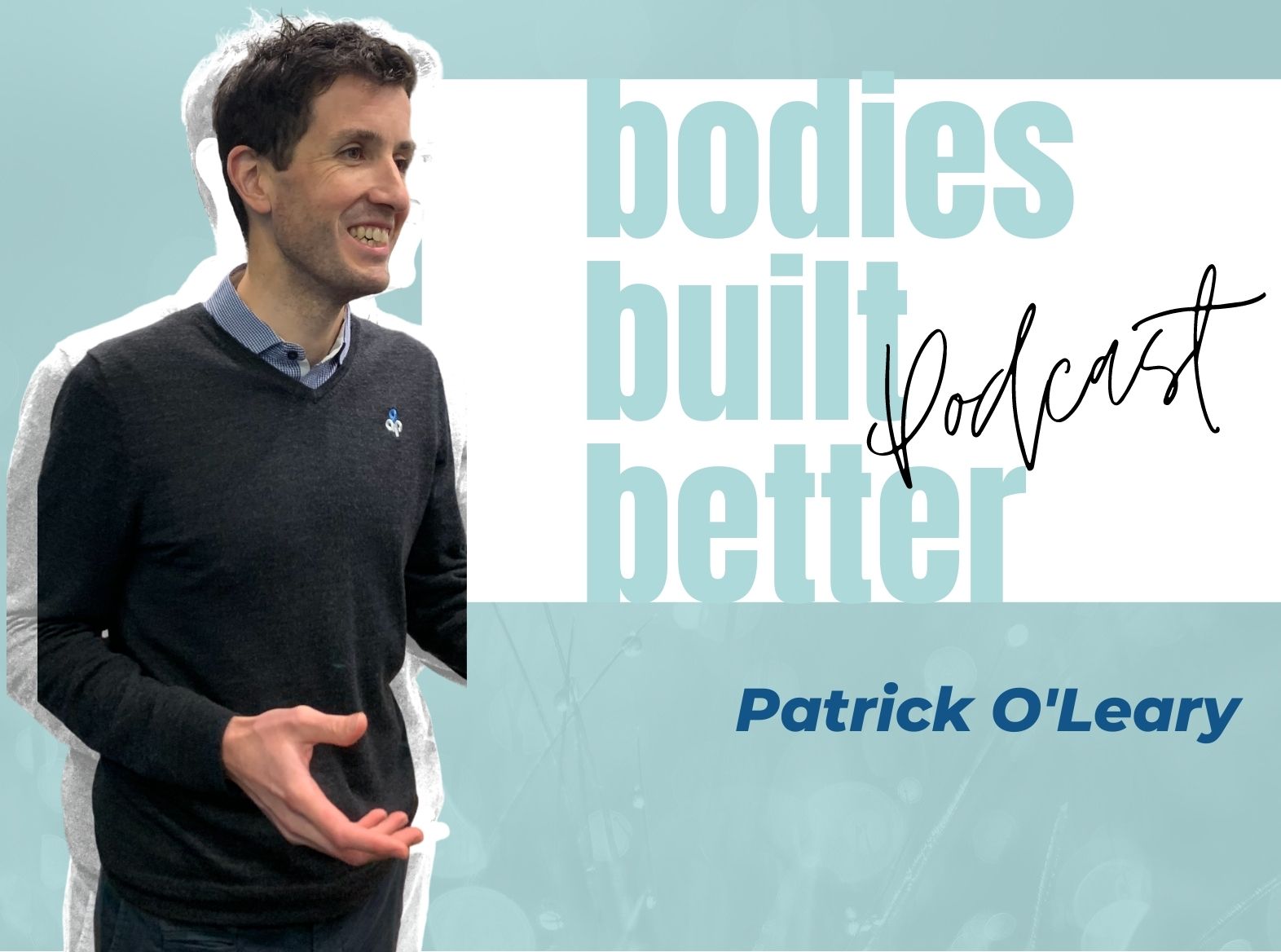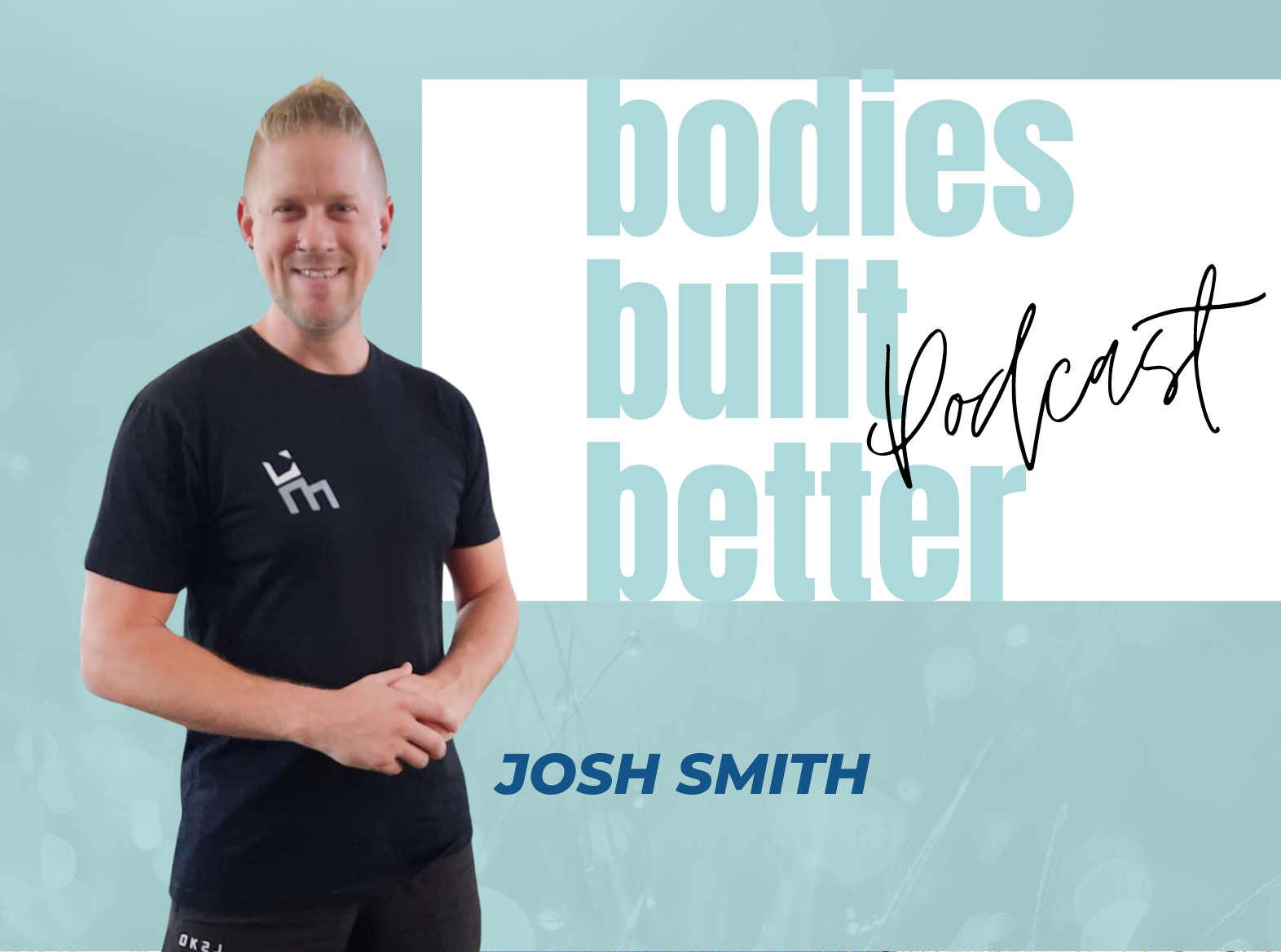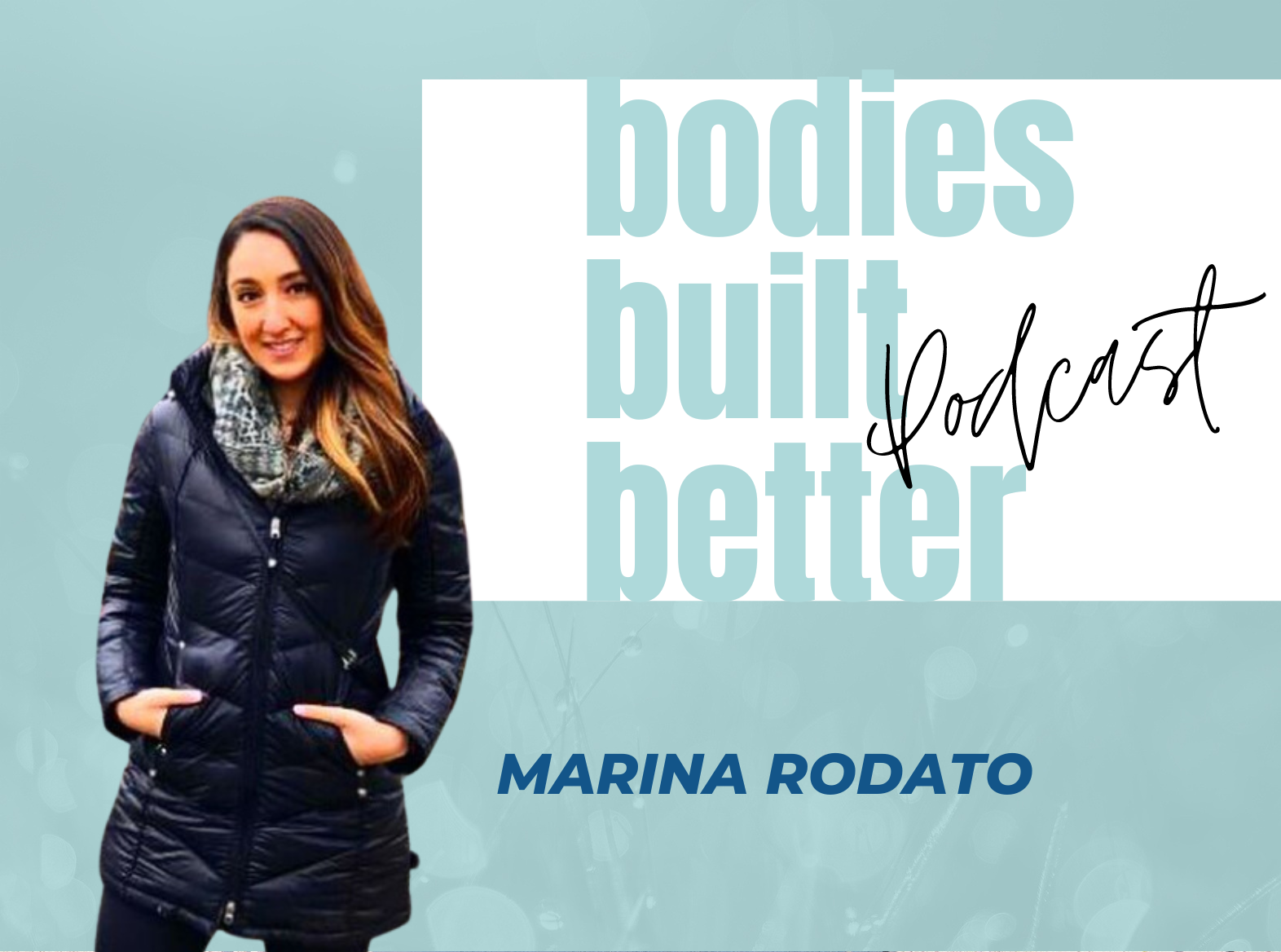Jackie 00:11
Hey, hey, this is Jackie Tann and welcome to the body’s built better podcast. On the show, we chat with experts, athletes, coaches and authors to educate and inspire you. We explore the body’s incredible ability to heal, adapt, and evolve so you could crush limitations, reconnect your body and mind and discover your extraordinary potential. Today on the show, I chat with physiotherapist Patrick O’Leary, now, I could rattle off Patrick’s very, very long list of accreditation and professional development. But the list is so long, I won’t do that too. But if you’re interested, just head over to Adelaide advanced physiotherapy, and you can check out that massively long list yourself.
But that is actually a really great testament to him and his commitment to his clients and profession, not only in my opinion, is Patrick, one of the best physiotherapists going around. But he’s also a really great guy who genuinely wants to give the absolute best treatments and outcomes to all of his clients. And to back that up.
I’m always asking my clients who they want to hear from on the show. And so many have said, Patrick, so there you go. Not only is he helping clients feel better, move better and live better. He’s so good at it. Clients actually want to know how he helps us achieve all of that. So what better way than to pick his brain on the podcast? And that’s what I do. So we chat about pain, identifying the cause we talk overuse injuries in cyclists managing injuries, we talk technique and what you should know and so, so much more. So I’m gonna stop rambling on here. You’re gonna love this episode. So here we go. Enjoy this episode with Patrick O’Leary. Patrick, thank you so much for joining me today. Can you give us a little bit of a background on you and why physiotherapy?
Patrick 02:30
Yes, well, thank you, Jackie. Thanks for having me.
I’m a physio in private practice in Adelaide in the city of Adelaide where this practice is called Adelaide advanced physiotherapy. We do primarily with active people motivated often gym going people as well or people that are quite into their sports work with five other physios there. And I guess we have a bit of a not unconventional but we sort of try to look at lots of different things in that practice there. From like a musculoskeletal sense or other systems. We get people out in the gym, we get people lifting on bikes on the treadmill. So we try to do a lot of movement assessment. We take some exercise classes as well as movement classes. And yes, I guess I guess we try to be as progressive in the physical world as we can be. And for me, it took me from a by personally to get a physio as well, like, it took me a little while to get there. I had a few attempts at uni courses to finish school when I wasn’t really sure what I wanted to do and switched careers as a guidance counselor and there was a new degree in arts and science was a double degree. And that’s good for people that aren’t really sure what they want to do. So I did that for a semester allied union and left there and didn’t really don’t like that there were general laws. And then I signed up for commerce and health science at Flinders the year after I started that for a year and I didn’t realize the commerce side of things. And I didn’t really want to be sitting at a desk or enjoyed the physiology and the anatomy of the health science degree and then a year after I applied for physio, and got into that, and that was it really before that. And here we are now.
Jackie 04:15
I really like how you’ve said the Allied advanced physio is very progressive. So what does that actually mean? And what is your approach and philosophy to treating people?
Patrick 04:28
Yeah, I guess I mean, no, I say progressive, but I don’t think we shouldn’t really be the exception to the rule. But I guess from feedback from other people, you do hear that, perhaps at times, there are people that are the people I sort of looked at, really as a whole person. And I think that’s one thing that we really try and do. And we, you know, physios really should be doing these days is sort of treating the whole person and I guess assessing that person as a whole and, and not really just physically speaking but in terms of everything really going on in their life. So There’s a reason we’re talking about a sort of bio psychosocial approach. So factoring is about the biological side of things, which is, you know, what’s happening in the tissues, we often talk about that. But certainly, you know, from, you know, psychologically what, what’s happening in their life, and socially what’s happening in their life? What are the other stresses or stressORS that have kind of led them to this point? You know, how their relationships at home and at work? Do they have, you know, the getting enough rest or recovery, what’s nutrition, like, those sorts of things. So, I guess we, you know, that sense, we try and look at that person as a whole, we also, you know, certainly acknowledge that we, you know, we only know so much about about these other things, so we can flag them, we might chat to the person say, Oh, look, you know, maybe, maybe this could be a contributing factor to your, you know, to your pain as you’re presenting experience. So maybe we need to see someone who’s maybe you can see a psychologist, we see a nutritionist, etc. So, again, from that aspect, we, from this, I guess, more the psychosocial aspect, we take all those things into account or try to take those things into account. And more physically, or, but, you know, politically, we, we certainly we’ve got, you know, a lot of time and we take a lot of interest in, in the joints, you know, the muscles, the bones, the ligaments, and whatnot attendance, but also, we try to have a look at other systems of the body. So we know the body doesn’t work, you know, just like the muscle is not just a muscle by itself, there, it’s got blood supply to and from, it’s got the lymphatic system that helps to clear it, it might have a relationship to, to an organs function as well. So we, you know, using different I guess, assessments, we have a look at different different systems, really. And so you might think, Okay, well, this person’s, you know, got this nasty inflammatory condition going on and ever, why isn’t that getting better? And is it maybe that the, you know, the blood flow, you know, without it’s not as efficient as it could be? Is the drainage system? That not working as well? Yeah, so I guess, I guess, just looking, I guess, a bit beyond, you know, not sort of in an alternative way, but more, I guess, less conventional way, then I suppose we were taught at uni.
Jackie 07:18
Yeah, absolutely. I mean, and, and when you’re talking, I mean, you just mentioned, like, all these systems here, as a client, or as someone who’s experiencing pain, like, how do we even know where to start? or How often is the pain actually, the problem? Yeah.
Patrick 07:39
Almost never, I suppose. Or almost never, I should say, the pain, you know, that the sight of pain, perhaps is the cause. You know, pain is a pretty good indicator, something’s going on, or something’s wrong, but it certainly doesn’t, you know, it doesn’t tell us what it is. I do really like to think, and I think this is the case for a lot of presentations that the, the majority of time, the thing that kind of is broken, or damaged, or irritated or inflamed, is often working too hard. So it’s, it’s been overloaded, because x, y, Zed elsewhere, is not pulling its weight. And this is more, I guess, in a muscular sense, if it were a stability sense. or there might be issues, again, with other systems around there. And then this, this, this pore structure is now complaining, it’s breaking down, or it’s, you know, it’s giving you grief, it’s irritating, it’s making making you sore in the morning, when you get up or not allowing you to, you know, reach up to grab something off the top shelf. But again, usually, it’s, it’s, it’s not that thing, that’s the cause. And so you just see a lot of people that we, you know, we always encourage you to try and sort of sort themselves out. And we typically get to see people when they get to that point where they can’t manage their pain or the dysfunction, but a lot of people will target that sore area. So they’ve got a, you know, saw a sore shoulder or saw something, you know, something there and they’ll, they’ll be rolling that they’ll be trigger pointing it, they’ll be doing whatever to it locally, and might give them short term relief, which is fantastic. And that’s good, that’s a good managing tool. But if those things keep coming back, I guess you want to sort of be asking the question, you know, what, what else could be driving this? You know, like, why, why does this thing like I can make a change to it locally? Or I can make a change by filling around with that structure. But is there something that’s bigger or further away or on the other side of me, that’s actually causing that irritation in the first place?
Jackie 09:41
Hmm. So as an athlete or as someone who wants to be proactive in keeping fit, strong, healthy, how, how do we take ownership of that and how do you start to identify what the cause of the pain is? Where are you going to find solutions?
Patrick 10:03
Yeah, a fantasy of good physio that’s a, that’s a good start. But in terms of, I guess, isolating yourself, I mean, it’s, it’s difficult, you know, we talk a lot about intrinsic body awareness or, you know, by you get people that have really good awareness, and you’ll be trading something somewhere in the middle, or you’ll point something out and go from there, I had a fiddle with that area. And, you know, you didn’t really know what to do, but I thought it might have been linked to my, to my shoulder. I guess the thing is, I mean, if you’re doing things, something, again, if you’re doing some stretching, or some rolling, or whatever the case may be self massage, and it’s, it doesn’t change, you know, there’s no, there’s no harm in doing just something else.
Listen to the rest of the interview on the podcast!
Where to find Patrick:
Website: https://www.aaphysiotherapy.com/
Instagram: @aaphysiotherapy
Facebook: Adelaide Advanced Physiotherapy
Get in touch: jackie@jackietann.com | @jackietann_rmt












